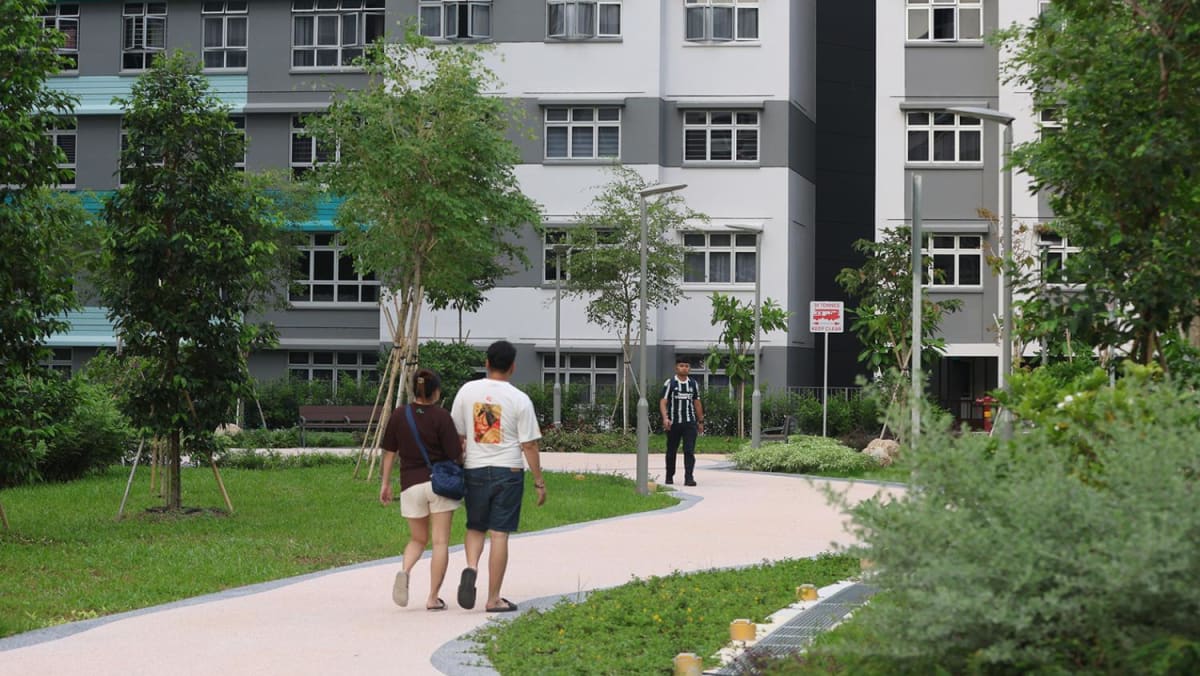
This article is written in partnership with the Ministry of Communications and Information in support of Forward Singapore.
Each week, TODAY’s long-running Big Read series delves into the trends and issues that matter. This week, we examine the trade-offs involved in meeting the rising homeownership expectations and aspirations in land-scarce Singapore. This is a shortened version of the full feature, which can be found here.
 By
By
Taufiq Zalizan
THE BIG PICTURE
On youths’ housing aspirations, economist Song Seng Wun noted that these were part and parcel of a society becoming more affluent. While Singapore’s economic growth has moderated in recent years as its economy matures, median household income has grown by 33 per cent in the past decade based on latest public statistics — from S$7,566 in 2012 to S$10,099 in 2022.
“The needs and the basic things may differ as economic development generates employment opportunities to allow people to aspire towards higher minimum basic needs,” said Mr Song, who is an economic adviser at financial service provider CGS-CIMB.
When the push for home ownership began during the early years of nation-building in the 1960s, the majority moved to affordable public housing, said Mr Song.
Today, while public housing ownership is still high — about eight in 10 Singapore residents live in public housing — the proportion has been on an overall downward trend over the last decade.
Based on data from the Singapore Department of Statistics, about 81.6 per cent of residents live in public housing in 2012. The proportion dropped to about 79.0 per cent in 2017. Last year, it fell further to about 77.9 per cent.
“More people, even first timers, can afford private housing as their first home”, Mr Song noted.
Trade-off #1: More subsidies = higher taxpayer expenditure
To keep public housing affordable, the Government currently provides targeted subsidies for certain groups deemed to need them the most, such as first-time homeowners, property analysts noted.
Huttons Asia’s senior director for data analytics Lee Sze Teck said handing out more subsidies is the “easiest” way to help home buyers but cautioned that this is “not sustainable”.
Agreeing, Mr Nicholas Mak, chief research officer at property technology company Mogul.sg, said: “The subsidy that is paid up in the BTO exercises today is actually from the taxpayers of yesteryears.”
Handing out more subsidies to flat buyers simply means growing a bigger bill that the latter would “end up also paying for” indirectly through taxes, he added.
Trade-off #2: Cheaper resale price = Lower asset appreciation
Mr Christopher Gee, senior research fellow and deputy director at Institute of Policy Studies, said that subsidies for new flats have benefited first-time buyers by making such homes affordable. And when these owners sell their flats, they can enjoy capital gains and are able to “monetise” the subsidies.
Mr Mak of Mogul.sg noted that as of 2022, there were over 1.2 million owner-occupied HDB flats.
Pointing out that Singaporeans typically use CPF savings to pay for their flats, he noted that suppressing resale market prices would effectively “reduce your wealth, (affecting) the flat in which your CPF money is invested in”.
Mr Song said that realistically, a homeowner cannot have it both ways. “Unless obviously, you’re looking at different (housing) areas, where you hope to benefit from the higher selling prices from that particular area, and benefit from an area where you may not have to pay as much (for a house),” he said.
Trade-off #3: More new homes in popular locations = possible traffic congestion, displacement of existing residents
Experts said it would be untenable to keep building new homes in existing housing estates to place everyone near their parents, for example, given the limited land availability.
Can’t the Government build taller flats and increase the supply of flats at mature estates?
Not only would this involve displacing residents from existing flats to make way for new ones but building taller flats is also not without its limits, the experts pointed out.
“There is a limit on how high we can build our flats. We need to consider the flight path of planes, wind flow and shadow cast by tall buildings on shorter buildings,” said Mr Lee from Huttons Asia.
Dr Tan Tee Khoon, country manager for Singapore at PropertyGuru Group, added that other limitations include higher construction costs with taller buildings and potential traffic congestions.
“The vision of the Master Plan is to create employment clusters and make suburban areas more appealing, like Tengah,” said Dr Tan.
“The demand for mature and popular locations is infinite. Hence, how to temper demand while ensuring viability would be top on the agenda for building HDB estates.”
The latest Home Attainability Index, which was published in May by the Urban Land Institute (ULI) Asia Pacific Centre for Housing, found that the median price of a private home in Singapore was the highest among 45 cities which the report looked at. The median price of private homes was 13.7 times that of the median annual household income in Singapore, the report said.
But in terms of public flats, the median price in Singapore was 4.7 times that of median annual household income. On this count, Singapore is the second-most affordable city in the Asia-Pacific, after Brisbane which has a ratio of 4.5.
The report also showed that Singapore has the highest proportion of homeownership at 89.3 per cent, leading by a significant margin ahead of second-placed Melbourne, which recorded 66.7 per cent.
Mr Mak from Mogul.sg said it is important to note however, that countries such as Australia — which Brisbane is a part of — have an advantage when it comes to supplying housing for its population.
“They can just keep letting the cities expand to build more housing and so on. We, unfortunately, face challenges in this sense,” he said, pointing to Singapore’s limited land supply compared to sprawling Australia.
At the end of the day, Mr Gee pointed to how much the housing system in Singapore has already achieved.
“It’s allowed multiple generations of Singaporeans to become property owners. There’s a genuine national benefit, societal good in having that ownership ethos for Singaporeans,” he said.
“It anchors people to the society, they have a tangible stake in this society in this country called Singapore. Because we are a nation of home owners, not just tenants.”